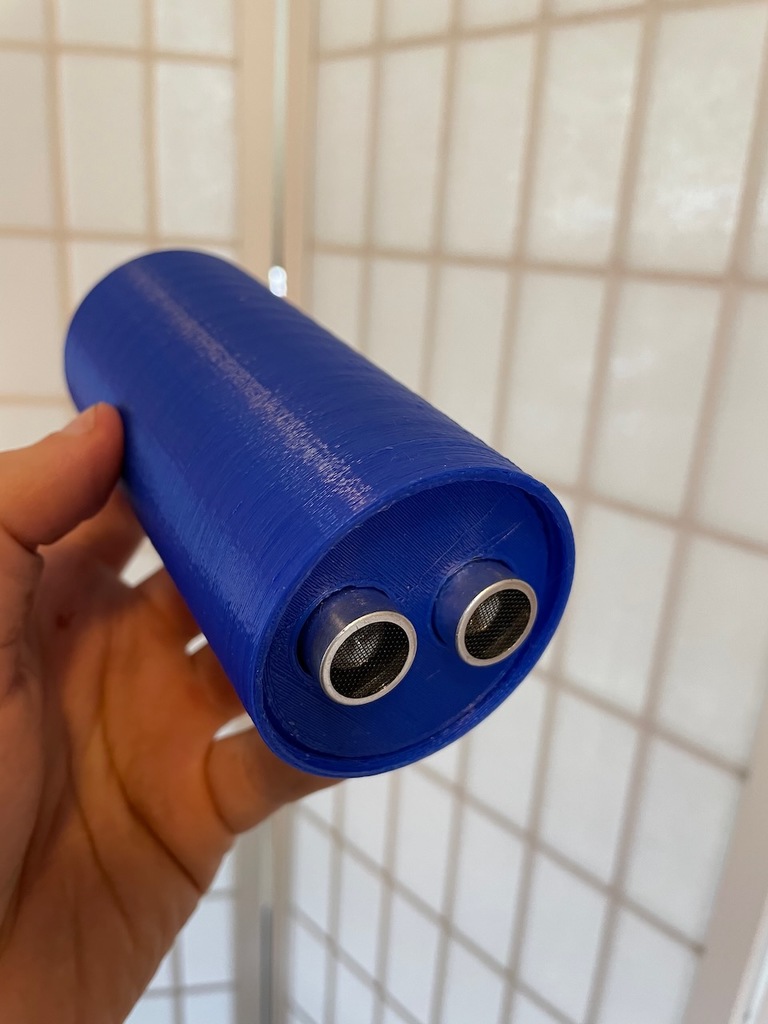
Dorothy Sensor Platform
thingiverse
# Dorothy - A Minimalist LoRa Sensor Platform **Dorothy** is a minimalist, open-source, low-cost sensor platform built around the LoRa protocol. It uses the [CubeCell V2](https://heltec.org/project/htcc-ab01-v2/) board and common off-the-shelf sensors to deliver readings to a central [hub](https://www.thingiverse.com/thing:6170504), and only needs to be recharged about once per year. Data is stored using [InfluxDB](https://www.influxdata.com/) and visualized with [Grafana](https://grafana.com/). This software can be [run in the cloud](https://www.influxdata.com/influxcloud-trial/) or on a local Linux server. Dorothy is aimed at anyone who wants to build a robust sensor network as cheaply as possible without being locked into a proprietary platform. ## Key Features - **3D Printable**: All components are fully 3D printable with no supports. - **Weatherproof**: Designed to live outside year round. - **Long Range**: Capable of a range of at least 1/4 mile (400m). - **Long Battery Life**: Designed for a battery life of one year. - **Easy to Assemble/Disassemble**: From the moment you're done printing, it takes about 20 minutes to assemble a working Dorothy, requiring minimal tools and skill. Just mount the components, screw it together, and you're set. - **Low Cost**: Around $25 per unit, including batteries. - **Easy-to-read Codebase**: The codebase is designed to be compact and easy to understand. - **Open Licensing**: Dorothy comes with a fully open license. ## How to build Begin by sourcing the materials you'll need to build a [hub](#hub) and at least one [sensor](#sensor): - [Heltec WiFi LoRa 32 v3](https://heltec.org/project/wifi-kit-32-v3/) (For the hub) - [Heltec CubeCell AB01 v2](https://heltec.org/project/htcc-ab01-v2/) (For each sensor) - At least three [18650 cells](https://www.amazon.com/s?k=18650) - Some [solid core wire](https://www.amazon.com/s?k=solid+core+wire) - [M2 screws](https://www.amazon.com/s?k=m2+screws+phillips) of assorted lengths - [1.25mm 2 pin Male JST Connectors](https://www.amazon.com/s?k=1.25mm+2pin+male+jst) - (Optional) These [pluggable LED Wire Connectors](https://www.amazon.com/s?k=Pluggable+LED+Wire+Connectors) which make it easy to quickly swap batteries in the field. And (depending on what you want to measure) your choice of: - [DHT22 Temperature/Humidity Sensor](https://www.amazon.com/dht22/s?k=dht22) - [US-100 Ultrasonic Distance Sensor](https://www.amazon.com/s?k=us100+sensor&ref=nb_sb_noss) - [I2C Soil Moisture Sensor](https://www.tindie.com/products/miceuz/i2c-soil-moisture-sensor/) ### Dorothy Hub The [Dorothy Hub](https://www.thingiverse.com/thing:6170504) is a bridge between the battery-powered sensors and your WiFi network. The current version of the hub uses a [Heltec WiFi LoRa 32](https://heltec.org/project/wifi-kit-32-v3/) board instead of a CubeCell. The WiFi LoRa 32 has an included OLED screen, which makes it easier to debug, but is missing some of the key battery management and low-power features of the CubeCell. Note that the same code should also work on the CubeCell, but I haven't tested it. ### Dorothy Sensor The Dorothy Sensor is designed around the [Cylindrical Battery Holder](https://www.thingiverse.com/thing:6080710) project, allowing for easy battery packs swaps. You can print various parts that will accommodate different sensors depending on your needs. This project includes examples of the US-100 distance sensor and DHT22 temperature/humidity sensor, but the sky's the limit (so long as it fits in the form factor, and is compatible with CubeCell). ## Software Dorothy transmits strings over LoRa using the [InfluxDB Line Protocol](https://docs.influxdata.com/influxdb/v1.3/write_protocols/line_protocol_tutorial/). This means that transmissions are human-readable. It also allows a good deal of flexibility without introducing any more complexity to the code. The code itself can be found on this project page (see the .ino files). Make sure to read through it carefully and understand how it works before flashing it to your CubeCell device. ## Future Work While Dorothy has undergone over two years of development and testing at this point, there are still several improvements that may appear in a future revision. First on the list is improving the way the CubeCell board secures to the "brain". I'd love to get rid of those M2 screws, but I wasn't satisfied with any of the solutions I attempted. Second is supporting more types of sensors, especially PIR sensors and even things like MEMS microphones. Finally, there's always room to improve the software. Improvement doesn't necessarily mean adding features, however, but making it simpler and easier to build on top of. ## Contributing As Dorothy is an open-source project, contributions are always welcome. ## License Dorothy is MIT-licensed.
With this file you will be able to print Dorothy Sensor Platform with your 3D printer. Click on the button and save the file on your computer to work, edit or customize your design. You can also find more 3D designs for printers on Dorothy Sensor Platform.
